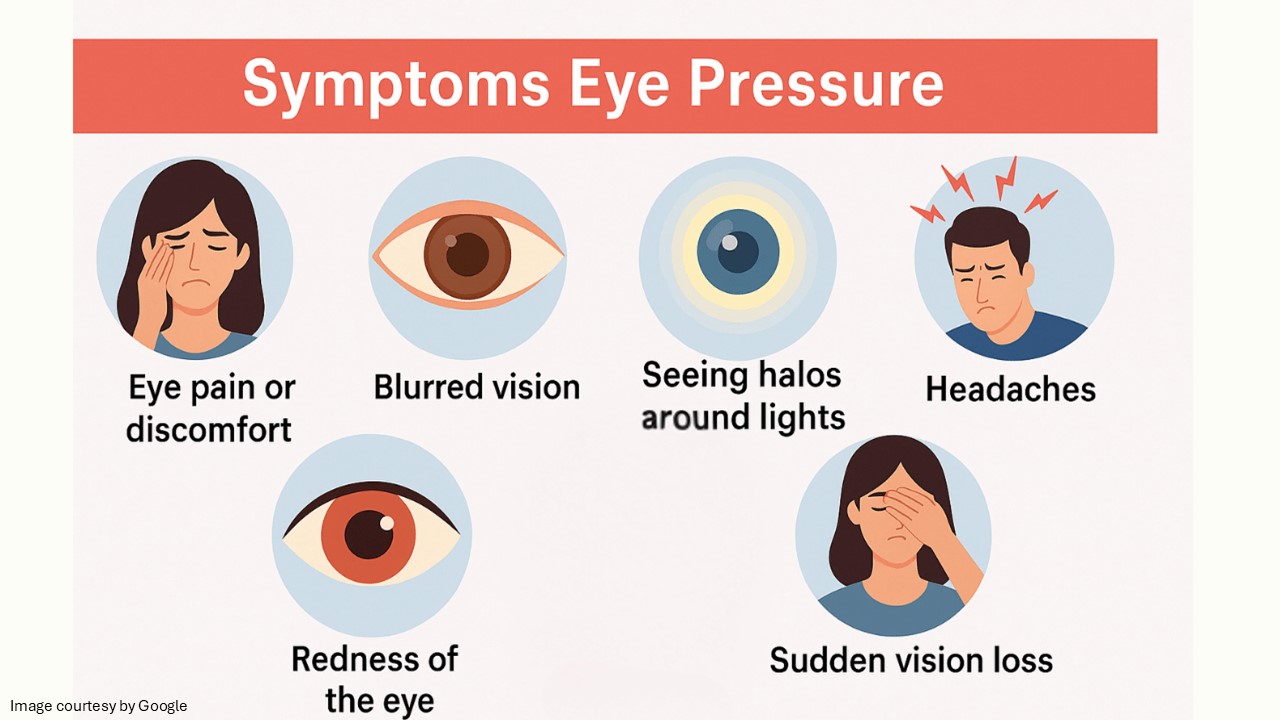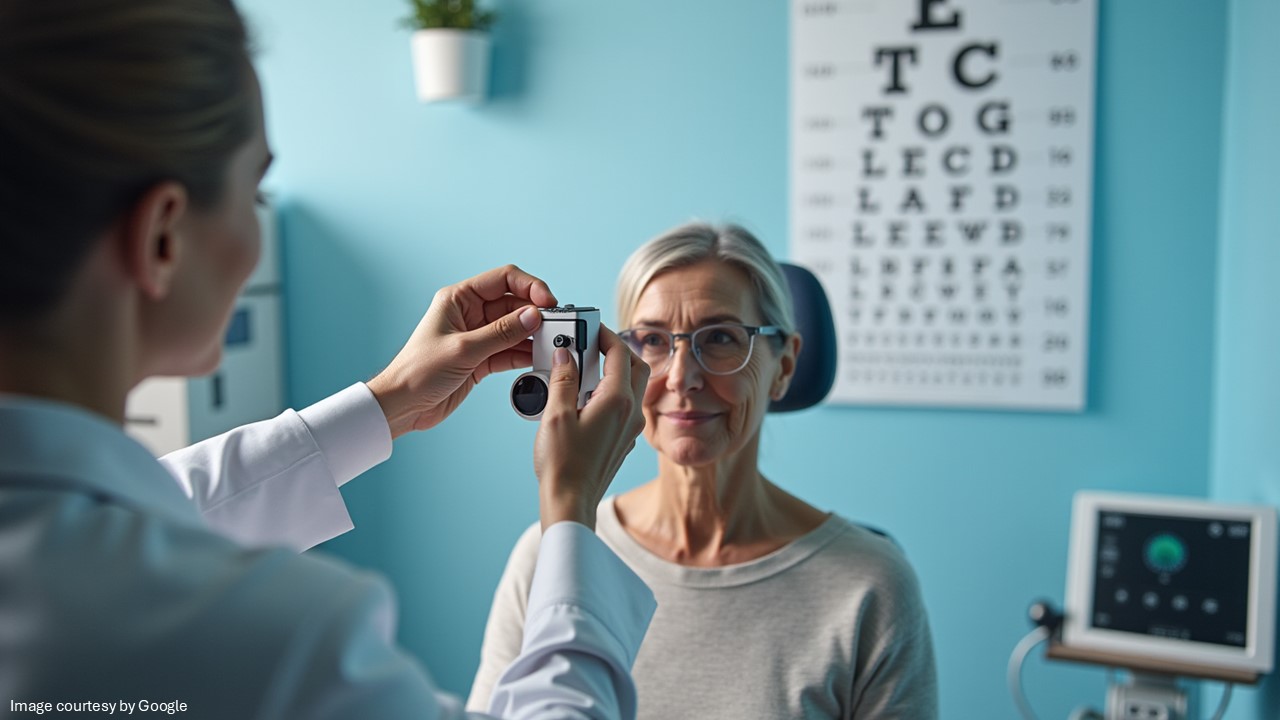Eye pressure plays a crucial role in diagnosing and managing eye conditions, such as glaucoma, which can lead to permanent vision loss if left untreated. This detailed guide provides answers to all your queries, including what normal pressures in the eye are, what causes high eye pressure, how to reduce eye pressure, and helps you better understand the important aspect of eye health.
When anyone focuses on eye health, they often look for signs of eye disease, vision-related issues, or the need for corrective lenses, such as glasses. However, another crucial aspect of eye health is eye pressure, medically termed as intraocular pressure (IOP). What is eye pressure? Just as blood pressure plays a crucial role in maintaining overall health, eye pressure is vital for proper eye function and the prevention of serious eye diseases, such as glaucoma.
What is eye pressure?
Eye pressure, also known as intraocular pressure (IOP), refers to the fluid pressure within the eye. Your eyes naturally produce a fluid called aqueous humour, which has the function of nourishing the eye and maintaining its shape. Aqueous humour is released in the ciliary body and drains out through a structure called the trabecular meshwork. Disruption in the balance between fluid production and drainage causes the eye pressure to increase. Maintaining IOP within the normal range is necessary, as increased pressure can cause damage to the optic nerve, the part of the eye known for sending signals to the brain. This damage may progress to vision loss, often observed in conditions such as glaucoma.
What is normal eye pressure?
The typical eye pressure range is between 10mmHg and 20 mmHg. Ophthalmologists and eye experts use a unit of measurement called millimetres of mercury (mmHg) to measure eye pressure within the eye. Changes in eye pressure often do not cause symptoms until the condition progresses to optic nerve damage, which is a more advanced stage. However, regular eye examination can help detect changes in the eye pressure before a serious complication occurs.
Can too high or too low eye pressure be harmful?
High eye pressure is medically termed ocular hypertension. If not treated, it can contribute to optic nerve damage. Optic nerves carry valuable information from the eye to the brain. High pressure inside the eye, or ocular hypertension, is considered the leading cause of glaucoma. What is glaucoma? Well, glaucoma is a group of eye diseases that contribute to progressive damage to the optic nerves, ultimately resulting in permanent vision loss or blindness. Glaucoma is associated with high eye pressure, which is typically above 21 mmHg; however, it is essential to note that the eye pressure at which damage occurs varies from person to person. Cases of low eye pressure are comparatively rare compared to cases of high eye pressure. A sudden reduction in eye pressure may cause damage to the eye’s tissue.
What increases your risk of high eye pressure?
What causes high eye pressure? Your eye pressure can increase excessively high when the aqueous humour exerts extra pressure on the inner surface of your eyes. This may occur if your eye produces an excess of aqueous fluid or if fluid is unable to drain properly. Here are the risk factors associated with the development of high ocular pressure:
Eye trauma from injuries or surgery
Birth defects that contribute to problems with eye fluid drainage
Uveitis, inflammation of the eye
Being over the age of 40
Having a family background of high eye pressure or glaucoma
Suffering from pigment dispersion syndrome
Using certain eye care medications, such as long-term use of glucocorticoids or steroids
Low eye pressure usually occurs due to surgery performed to treat glaucoma. The following conditions can also cause low eye pressure:
Proliferative vitreoretinopathy, a complication associated with retinal detachment
Reduced fluid production
Weakness in the eye because of genetic conditions like Marfan syndrome
Certain medications, including nitrates, antivirals, beta blockers, and cidofovir.
Persistently low eye pressure can lead to blurry vision, corneal swelling, or retinal damage.

What are the symptoms caused by abnormal eye pressure?
As mentioned above, eye pressure does not usually cause noticeable symptoms, which is why regular eye checkup is an important part of healthy living. However, when IOP becomes significantly low or high, signs may include:
Headaches
Blurred or hazy vision
Eye pain or discomfort
Redness in the eye
Halos around lights
Nausea and vomiting (in severe cases, if acute glaucoma)
In contrast, many people with ocular hypertension show no symptoms at all, making it a considerable silent risk factor for glaucoma.
How is eye pressure measured and treated?
An eye expert, also known as an ophthalmologist, can measure eye pressure by performing a test called tonometry. What makes this the most reliable test is a specific type of tonometry called applanation tonometry.
How to reduce eye pressure?
High pressure within the eyes is usually treated with prescription ophthalmic solutions that either aid in draining the fluid or reduce the amount produced. These ophthalmic solutions may include one or more of the following:
Latanoprost (a prostaglandin analog)
Timolol (a beta blocker)
Brinzolamide (Alpha-2 agonists)
Dorzolamide (Carbonic anhydrase inhibitor)
Netarsudil (rho kinase inhibitors)
Pilocarpine (cholinergic agent)
Latanoprostene bunod (Nitric oxide donors)
Acetazolamide, a carbonic anhydrase inhibitor, is available as an oral formula. In case you do not respond to medications, you may require laser treatments or glaucoma surgery.
Treatment of low eye pressure targets the underlying cause, including previous surgery or injury. You may be prescribed steroids or non-steroidal anti-inflammatory agents to lower inflammation. For more information on treatment, please consult your ophthalmologist.
Conclusion
The typical eye pressure range is between 10mmHg and 20 mmHg. However, the eye pressure at which damage happens is different for each person. High eye pressure can damage the optic nerves, leading to loss of eyesight or blindness. Usually, no symptoms are noticeable unless vision loss occurs, which often begins in peripheral vision. Low eye pressure is rare but may also lead to eye damage. Regular eye checks are the best way to identify high eye pressure before symptoms appear.




